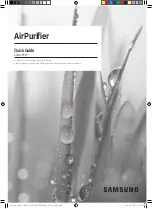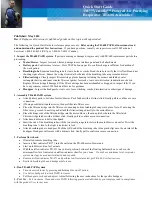
ESIE16-02K
|
Part 2. Troubleshooting
2.3. Symptom based troubleshooting
31/05/21
|
Version 1.1
Page 45
RA R32 Split & multi split M-Series
2.3.3. Some indoor units do not operate
2.3.4. Operation starts but the unit does not cool/heat
2.3.5. Operating noise and vibrations
Check
Detail
Check the type of the indoor units.
Is the indoor unit type compatible with the outdoor unit?
Check if the operation modes of the indoor units have conflict.
Heating mode CANNOT be together with FAN* or Dry or Cooling
mode. And vice versa.
Other combinations of modes can be together. (Ex. Cooling and
FAN, Cooling and Dry)
Check
Detail
Check the electrical power supply.
Is the rated voltage (± 10%) supplied?
Check for piping and wiring errors in the connection between the
indoor units and outdoor unit.
Refrigerant piping is too long; is the length within specified
range?
Field piping is defective; is there a refrigerant leakage?
Is there capacity loss over the condensor, saturation pressure or
sound because of air mixed in to the circuit?
Incorrect size of connection wiring.
Is there a cross wiring? (Ex: Indoor unit A piping is with indoor
unit C wiring.)
When the operation lamp blinks, there may be a thermistor
detection error code, activating the protection device.
Check the resistance of all thermistors.
Check the connection of all thermistors.
Is there a malfunction in the room temperature thermistor or out-
door temperature thermistor?
Check for faulty operation of the electronic expansion valve.
Set the unit to cooling operation, and check the temperature of
the liquid pipe to see if the electronic expansion valve works.
Diagnose by service port pressure and operating current.
Check for refrigerant shortage.
Check if the set temperature is appropriate.
thermostat “off” can be activated, set the appropriate tempera-
ture.
Check the type of the indoor and outdoor units.
Is the indoor unit type compatible with the outdoor unit?
Check the air filter.
Is the air filter clean?
Check
Detail
Check the installation conditions (specified in the installation
manual).
Use general vibration prevention where needed.
If the mounting wall is too thin, you must use cushion material or
rubber, or change the installation place.
Refrigerant piping is too short; is the length within specified
range?
Due to bad installation or general conditions there may be defor-
mation of the unit.
Are all the screws installed and tightened properly?
Is all piping secured, fixed and supported by inserting a cushion
material where needed?
Install piping weights or correct by hand if any piping is in contact
with other parts.
Is the fan in contact with other parts? If so separate the fan from
the other parts.
Check refrigerant charge.
Is the unit filled with the specified refrigerant volume?
Is there a flushing noise, due to refrigerant shortage?
Is there air in the system?
















































